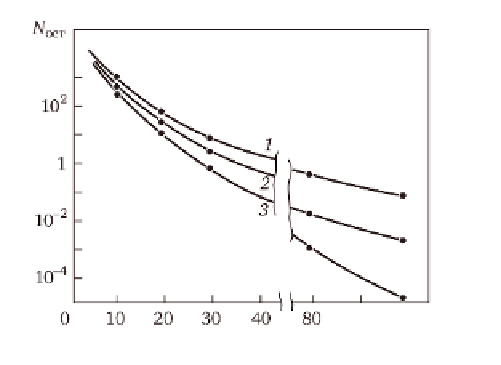Environmental Engineering Reference
In-Depth Information
N
res
Crack length, mm
5.38
Number of remaining cracks in the cladding of a pressure
vessel: 1) before inspection, 2) after first inspection, 3) after
second inspection.
the functions
W
and
N
in
is reduced to determining the unknown constants
A
,
n
and α. The constant
a
0
is easy to find from the inspection results.
The coefficient
A, n
and α can be determined from the condition of
maximal proximity of the calculated curve to the experimental one.
Table 5.9 shows the constants
A, n
and α, obtained by analyzing the
results of flaw inspection at nuclear power plants during entry inspection
and commissioning works. The cladding of the reactor vessel was inspected
by dye penetrant inspection, the pipelines by ultrasonic testing.
Figure 5.38 shows the results of analysis of initial and residual
defectiveness in the cladding of the reactor pressure vessel. Curve 1
characterises the initial defectiveness of the cladding after factory inspection
in the plant and before inspection at the nuclear power plant. Curves 2
and 3 characterise the residual defectiveness after two inspections at the
nuclear power plant.
5.2.4 Possibility of predicting the results of repeated
inspection
Generalising equation [5.21] to the case of the k-th inspection gives the
equation:
89
{
}
[
]
[
]
k
−
n
(
N
)
=
Aa
exp
(
k aa
1)(
−α −
)
1
exp
−
(
aa
−
)
−α −
.
[5.22]
det
0
0
Determining the constants
A, n
, α and
a
0
from the results of the first
inspection, as described above, the results of subsequent inspections can
be predicted.
Comparison of results of repeated inspection of the cladding of the
reactor casing during start-up operations by the dye penetrant method with


Search WWH ::

Custom Search